The fusion of art with technology is a transformative idea. In the age of information and digitisation, Van Gogh’s 360° immersive exhibition exemplifies the ubiquitous nature of technology in all aspects of life. For good or bad, we are yet to see.
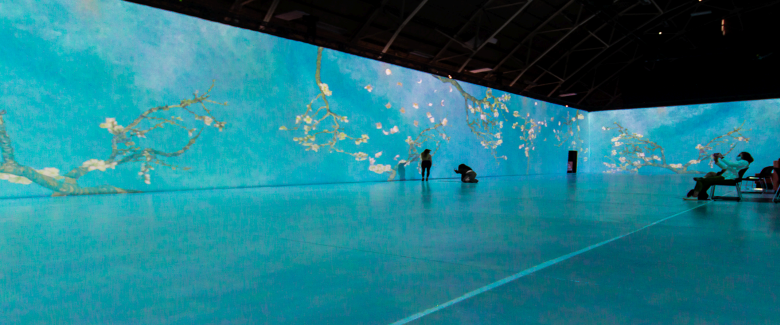
Illustration 1: Courtesy Van Gogh 360°™ India
The experience at the Van Gogh 360° exhibition is quite literally getting immersed in a room full of art. Along with the socio-economic and cultural reasons, the COVID-19 pandemic was one of the central causes behind the mushrooming of many virtual museums in India and the world. Technologically produced art is replacing traditional physical forms of classical art, which is mostly confined behind the glass frames of museums. The fusion of classical art with contemporary technology is an idea that has gained relevance and is futuristic in an information age. The amalgamation of technology in every aspect of life is becoming a ubiquitous phenomenon day by day. Digital art has pushed the boundaries of traditional art and artists. Scrolling Instagram has introduced us to several digital artists who are trying to showcase their art through social media, another digital platform. These days, people also use virtual reality and augmented reality to engage with art.
One of the events that became highly popular in India last year was the Van Gogh 360° immersive experience in multiple cities. It was organised in Mumbai, Delhi, and later in Bengaluru, and now it plans to open soon in Hyderabad and Pune. Isn’t it fascinating that much of the event advertisement was also done through social media platforms like Instagram, limiting art to merely a piece of information? It was one of a kind immersive experience that “offer(ed) visitors the chance to walk into spaces, showcasing floor-to-ceiling projections of his famous artworks”1.
Illustration 2: Credits to the Official Instagram page of Van Gogh 360 India
The official website of the immersive exhibition states the following about the experience:
Van Gogh 360°™ is an immersive experience featuring the work of one of the most famous and influential figures in the history of western art. Vincent Van Gogh’s paintings are housed in galleries and collections around the globe. Van Gogh 360°™ brings over 300 of his most popular works together in a dynamic show that is not to be missed.
Illustration 3: Courtesy Van Gogh 360°™ India
WION’s coverage of the exhibition in Mumbai gives a commentary on immersive art as a “new trend that uses new media to create a total body experience… (where you) lose your sense of self in the masterpieces.” In the same coverage, Tabish F Khan, the Founder-Director of Theia Enterprise, is being interviewed, and he remarks that one of the key features of this exhibition is that it made art relatable to the people. The life, the art and the struggles of Van Gogh have reached more people. Issues such as mental health and depression are brought to the limelight through such exhibitions. The reporter notes that the 1st section of the exhibition is an educational section that takes us to the
early life of the artist.
The blending of art and technology is futuristic and revolutionary. as it leads to newer aesthetics of art. Edward A. Shanken, in an article titled Art in the Age of Information Technology: Technology and Conceptual Art, contends that one of the aspects that art-and-technology investigates is “the use of scientific concepts and technological media both to question their prescribed applications and to create new aesthetic models” (Shanken 434).
Illustration 4: Courtesy Van Gogh 360°™ India
All of this highlights the positives of technological intervention in art. One of the visitors to the exhibition in Delhi shared her experience and illustrated how it is different from a usual visit to conventional art museums. She said:
You usually go to a museum and just see the paintings, but with this exhibition, the paintings were all in motion and sort of blended and connected to the next one, so it was really beautiful. Moreover, because it was a 360° installation and there was music in the background, it was even more pleasing.
Her experience is imperative in understanding how this 360° immersive experience enhances the reception of classical art. This use of technology adds an element of dynamism to the exhibition of the classical paintings of Van Gogh. The technological use of 360° immersion heightens the sensorial experience of the immersive exhibition. With everything around us being a part of the larger simulation, for people to engage in creative processes and art, it has to be very dynamic and appeal to multiple senses. While it stimulates our senses beyond just the sight, i.e. our sense of touch and hearing, by virtue of being an all-encompassing exhibition, it is also possible that it clouds our senses,
making us numb to the paintings.
Illustration 5: Credits to the Official Instagram page of Van Gogh 360 India
The Caption of this particular post exemplifies the variety of senses engaged and the emotions felt as a result of blending technology with art.
Another aspect of this fusion of technology and art is the dynamic interaction that plays a major role in art appreciation. Due to the dynamic and moving nature of the artworks, visitors can walk around and closely observe the minute details of the artist’s creativity. The sense of movement in this exhibition due to technology enhances the dynamism, making it distinct from traditional art. The immersive experience and the 360° experience allowed them to study the brush strokes, contours and colours closely. The reception of art in such technological immersive exhibitions is an interesting domain for study. Van Gogh became a popular painter in contemporary times, with his paintings,
especially Starry Nights, being used as phone covers, wallpaper, and so on. Therefore, it is challenging to claim that everyone who went to the exhibition was genuinely interested in Van Gogh or his art. One of the reasons might be the fact that it was heavily advertised on Instagram, and for youngsters, their first introduction to the painter was through social media. Hence, there were not a lot of people who criticised or appreciated his paintings by going into the nuances of art and the post-impressionist movement he was from. Multiple people shared one common experience about the exhibition that most people were engaged in clicking pictures in the exhibition instead of consciously walking through the exhibition. For those interested in technology’s intervention in art, it is a really good project to study and see the contemporary reception of classical paintings and how they differ from traditional exhibitions of the paintings.
Illustration 6: Courtesy Van Gogh 360 Mumbai: What To Expect At This Immersive Art Experience
The evolution of the exhibition setup is one of the major futuristic elements of the exhibition. As Shanken argues in Art in the Age of Information, ‘technology was employed as a means to enable art to become a responsive, real-time system that “merges with the environment in a relationship that is better understood as a ‘system’ of interdependent processes”’ (Shanken 435). Levine argues that “the
proliferation of mass media was changing knowledge into a second-hand mental experience of simulations and representations i.e. software – as opposed to first-hand, direct, corporeal experiences of actual objects, places and events, i.e. hardware” (Levine qtd in Shanken 434). This argument is similar to one of the arguments of Walter Benjamin about the aura of a piece of art in the context of mechanical reporduction, which no longer holds importance.
For art lovers, the Van Gogh 360° immersive exhibition offers a life-changing experience, marking a remarkable advancement in the fusion of technology and art. This exhibition uses technology to bring Van Gogh’s paintings to life, which makes classical art more relatable and engaging. The 360° immersion, multisensory engagement, and dynamic interactivity all help viewers comprehend and appreciate the artworks more fully. There are certain drawbacks as well, such as visitors who might be less interested in actively appreciating the art and more concerned with taking photos for social media. The way that exhibition settings have changed in the digital and information age is indicative of a more general change in the way that art is viewed and experienced, making it harder to distinguish between software and hardware. The Van Gogh 360° exhibition offers both opportunities and problems in the realm of contemporary art, serving as a monument to the changing interaction between art and technology and depicting the futuristic application of technology in the coming times.
1. https://www.cnbctv18.com/entertainment/all-about-the-van-gogh-360-show-set-for-mumbai-debut-tickets-dates-all-deta
ils-here-15186391.htm
List of illustrations
1. Description: The picture illustrates the immersive nature of the exhibition.
2. Description: This image shows enjoying the 360 ° nature of the exhibition and captures the essence of the title, “room full of art”.
3. Description: This picture was taken from the official website of Van Gogh 360° India. It demonstrates the key features of the exhibition and is used to draw the attention of the audience to the exhibition and convince them to make a visit to it. The picture supplements
the quote from the same website as the picture.
4. Description: This picture shows the first section of the exhibition, depicting the life of the artist.
5. Description: The Caption of this particular post exemplifies the variety of senses engaged and the emotions felt as a result of blending technology with art.
6. Description: This is a comment in the review article by LBB that covered the Van Gogh Exhibition in Mumbai. The comment captures the experience of people who actually went to see the blending of technology and art.
Works Cited
Bhattacharjee, Shoma. “All about the Van Gogh 360° show, set for Mumbai debut — tickets, dates, all details here.” CNBC TV18, 16 November 2022, https://www.cnbctv18.com/entertainment/all-about-the-van-gogh-360-show-set-for-mumbaidebut-tickets-dates-all-details-here-15186391.htm. Accessed 22 January 2024.
Shanken, Edward A. “Art in the Information Age: Technology and Conceptual Art.” Leonardo, vol. 35, no. 4, 2002, pp. 433-438. JSTOR, https://www.jstor.org/stable/1577407.



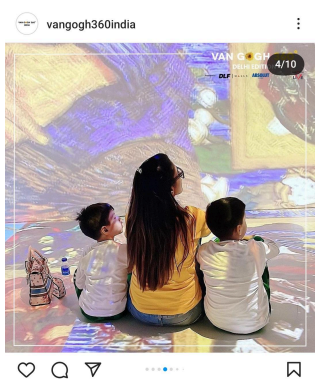
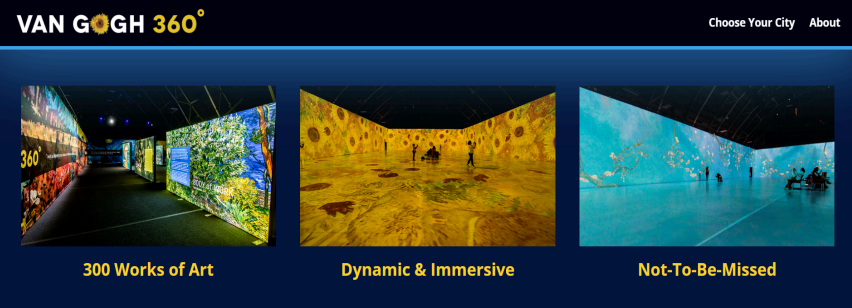
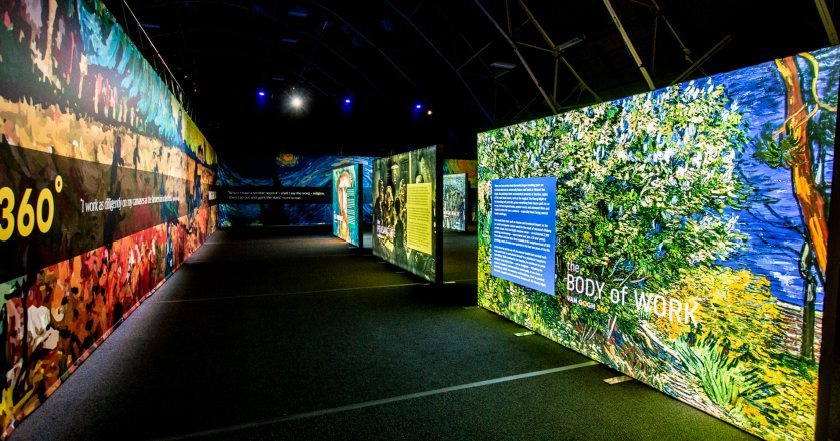
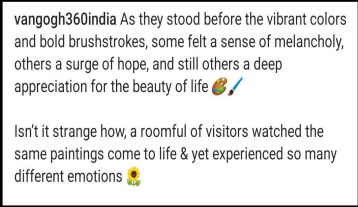
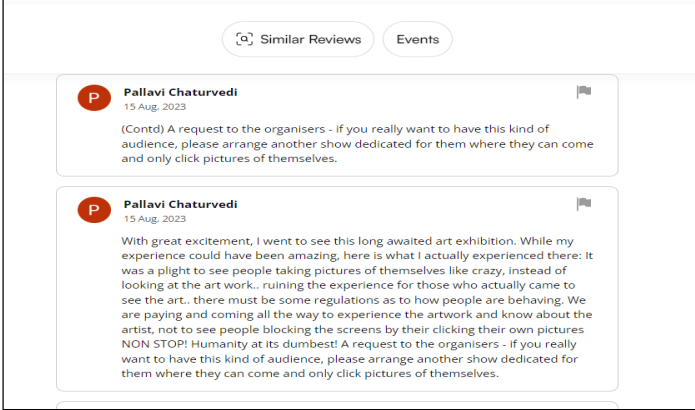
Recent Comments